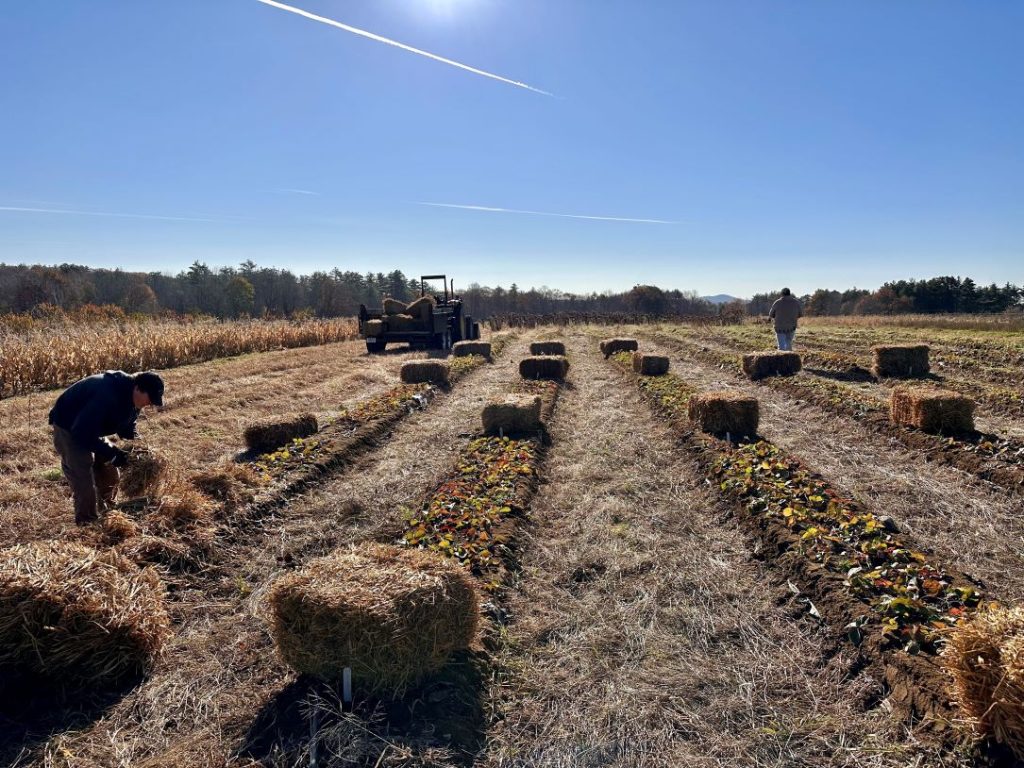Time to Mulch Your Strawberries

Although strawberries have long been grown successfully in Maine, they are not particularly hardy plants. However, because of the low growth habit of the plants, and their tendency to grow in protected areas near wood lines in the wild, they are often covered with leaves and snow during the coldest parts of the winter, which insulates and protects the plants from extreme temperatures. In cultivated beds, plants must also be protected with insulating cover, in order to prevent winter injury.
Mulch should be applied over the beds in the late fall after the plants are dormant. A good indication of this occurs after a few hard frosts when the leaves turn reddish and collapse down around the crowns (usually late November). Clean straw, from oats, rye, barley or wheat is the most commonly used mulch. Mulch hay should not be use because it contains weed seeds that will become problematic next spring. Be discriminating about your source of straw. Straw from weedy fields will result in weed infestations in your strawberries.
Two to five tons of straw per acre is recommended (approximately one ton of straw provides one inch of coverage per acre). Use the higher rates if your fields are exposed and do not get consistent snow cover. The mulch layer should be approximately 6-8 inches deep over the plants when applied. Several types of machines are available to break up straw bales and help distribute it over the beds. It is best to apply straw mulch before a rain so that the water can settle the straw down over the plants and help prevent it from blowing off in a strong wind.
For plasticulture beds, fabric rowcovers are applied for protection over the beds rather than straw. While these sometimes do not offer consistent winter protection, they are much easier to work with in a plasticulture system. Covers should be applied soon after the plants are dormant, and be at least 1.25 oz. thick to provide adequate insulation. Some manufacturers offer thicker covers specifically for winter protection. Be sure the edges of the cover are adequately weighted down with sand bags, or bury the edges to prevent the wind from dislodging them.
Leave the mulch on until early spring, when new growth is starting to show from other perennial plants, such as emerging tulips and lilac buds opening, usually in early April. Then
rake it off of the plants and leave it between the plant rows to provide weed suppression in the aisles. Leaving the mulch on the strawberry plants too long can slow early plant growth and flower bud development, leading to later ripening and lower yields.
David T. Handley, Ph.D.
Vegetable & Small Fruit Specialist
University of Maine Cooperative Extension
The University of Maine is an equal opportunity/affirmative action institution.
